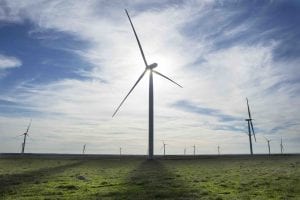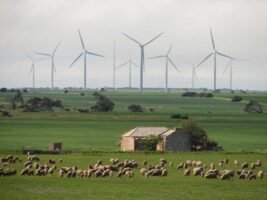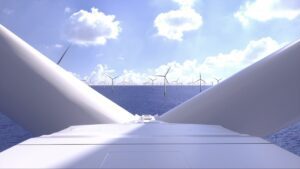The NBN Co is testing a new micro wind turbine design at a site in Geelong, Victoria, to decide whether it can play a supporting role in emergency electricity supply.
NBN Co is testing a mobile 220 watt (W) micro wind turbine made by University of Newcastle spinout Diffuse Energy. The three-turbine set-up sits on a trailer and can handle wind speeds of 150km/h. The trial has been running since January.
A statement from NBN Co says early results “indicate the potential for using wind power” to extend the life of temporary battery-solar-diesel generator power supply during emergency situations, such as floods or fires.
“From a resilient network perspective, we have determined it is possible to use wind generation to extend the battery life of temporary assets or a site during an emergency event – supporting communities and emergency services with connectivity when they need it most,” said NBN Co chief engineering officer John Parkin in a statement.
Solar killed the wind star
Micro wind turbines were an up-and-coming technology in the early 2010s, when new designs were encouraging many to think about them in the same way as rooftop solar — small scale distributed energy supply possibly even in residential settings.
But then cheap solar came along and killed the idea.
“The capital cost of the mast and holding infrastructure is what kills them. The yield that you get compared to the cost of the infrastructure,” Bruce Mountain, director of the Victoria Energy Policy Centre, told RenewEconomy.
“It was something that people showed a bit of interest in until solar came along.”
He says to get the most out of wind you “have to go big”, and that requires significant and costly infrastructure to handle the forces at play.
It is an idea that scientists can’t resist having another go at, however.
In October scientists from the Nanyang Technological University in Singapore unveiled a low-cost “wind harvester” which can harness energy from wind as gentle as a light breeze.
The wind harvester can generate and store electricity at wind speeds as low as 2 m/s. Each wind harvester is only 15 cm by 20 cm and can produce a voltage of 3 volts and generate electricity power of up to 290 microwatts.
Diffuse Energy CEO Dr Joss Kesby says the area where micro wind plays is in the last 20 per cent: using solar to cover 80 per cent of your energy needs is cost effective, but bridging the last part is challenging.
“Ours tends to be more expensive than solar, but it is cost competitive when it comes to that last 20 per cent, which is where we operate,” he told RenewEconomy.
“People are finding that solar’s fantastic but what we are providing is that additional complementary technology to solar. Most of our systems use solar as the backbone, but during winter and the rainy, cloudy months is where our turbines kick in.”
Proof is in the revenue
Commercially, the proof of the NBN Co experiment with this turbine application and model will be in if the teleco places follow-on orders, says Climate Energy Finance director Tim Buckley.
“If they were commercially viable there’d probably be demand for it. But I’ve not seen any evidence that they are taking off,” he told RenewEconomy.
“What we do know is wind is stronger and more consistent as you go higher, hence why the biggest wind turbines in the last few years have gone from 0.2 megawatts (MW) to 18 MW in China, but you have to go higher and higher to get the wind speed.”
ARENA gave Diffuse Energy a $341,990 grant in 2020 to trial a 500 watt mini turbine to power remote communications sites. Ten systems were to be set up at different locations, and in 2021 the company was in talks with Optus and Telstra to participate.
The company finalised nine trials under the ARENA scheme, and the three with NBN Co, but it has also sold around 40 individual turbines.
Kesby says these are mostly to small telecommunications companies that want to maintain remote connections and offgrid houses.
“We normally provide a single turbine, but we do have sites with two. We provide the turbine, cabling, control systems,” he says.










